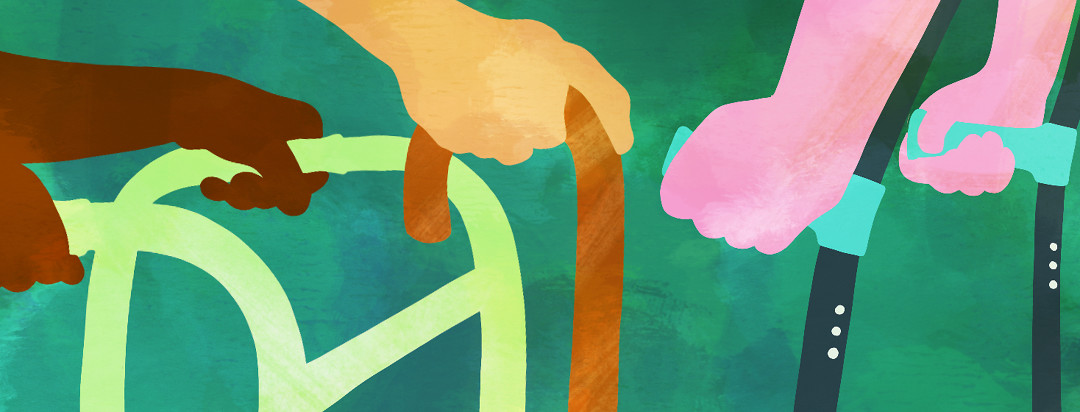Using Assistive Devices
Axial spondyloarthritis can cause pain, swelling, and stiffness in the back and hips along with other joints such as the knees, shoulder, and feet. The disease does not develop the same way for everybody, so people can experience different symptoms or a different pace of disease progression.
Symptoms can limit your ability to move
Over time, axial spondyloarthritis can cause bones in the spine and hip joints (called sacroiliac joints) to fuse, or grow together. This can further limit your movement and flexibility and make it harder to carry out the normal tasks of everyday life.
Experts recommend regular exercise and physical therapy to help keep your joints as healthy and flexible as possible. But no matter how consistent you are in maintaining your physical fitness, it can sometimes still be challenging to handle daily routine tasks—from getting out of the shower to taking out the trash to bending down to tie your shoes.
Using assistive devices
Thankfully, there are devices that can assist when it’s hard to reach or bend. Although you might be tempted to push through the pain, it can be helpful to conserve your energy and take the pressure off your joints by getting some help from a gizmo or two. Not every person will need every available tool. Use the ones that make sense for your symptoms and your lifestyle.
Here are a few that can make a difference:
- Canes, walkers, and crutches. These devices can help you maintain balance and reduce falls, particularly if you have to change how you walk because of stiffness or pain. Walking devices also help control pain by taking pressure off tender or swollen joints.
- Bath, shower, and bathroom handrails. Handrails can add an extra layer of support and balance when you are getting in and out of the tub or lowering yourself onto the toilet. Support bars are helpful, because they take the pressure off your joints. They are also stronger than towel bars, which are not made to withstand weight and could come off the wall, causing a dangerous fall.
- Reachers. It can be challenging to reach items on high shelves no matter how mobile your body is. Reachers can help extend your reach in many directions, so you don’t have to strain. This is especially important when you have limited mobility or range of motion due to your AS symptoms.
- Raised seats and cushions. If it is difficult or painful to get up from couches, chairs, or even the toilet seat, raised seats and cushions give you a way to sit without having to bend as much.
- Braces, splints, and orthotics. These devices can help support your body and take the pressure off swollen and tender joints and tendons in your arms, wrists, heels, and arches.
- Dressing aids. Extended shoe horns and devices to help pull up your socks can make a meaningful difference to people with limited ability to bend down and reach their feet.
- Objects on wheels. Choose garbage cans, stools, and carts on wheels, so you can move them without having to lift and carry.

Join the conversation